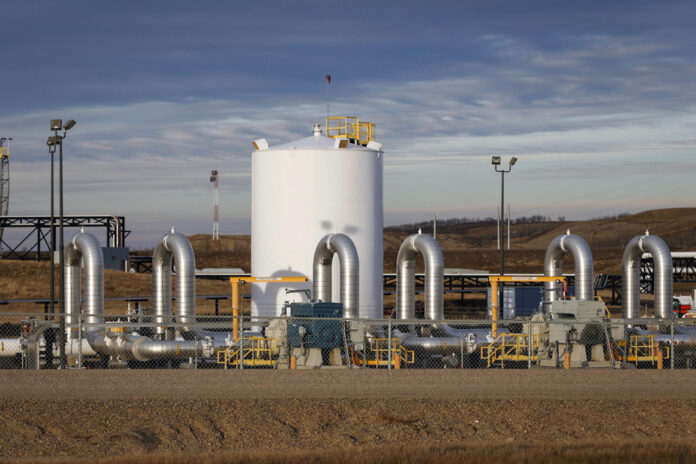(Ottawa) The Canadian economy contracted in the third quarter as rising interest rates weighed on consumer and business spending, but it has so far managed to avoid a recession after a major revision to the rise in second quarter gross domestic product (GDP) figures.
Statistics Canada released its gross domestic product report on Thursday, which showed the economy shrank 1.1% on an annualized basis.
The body also revised upwards the second quarter real GDP figures, noting that the economy did not contract, but rather grew by 1.4% on an annual basis.
Although the decline in the third quarter was offset by growth in the second quarter, economists who responded to the new data say the trend is clear: the economy is faltering.
“The big picture is that the Canadian economy is struggling to grow, while still managing to keep its head above the waters of recession,” wrote BMO chief economist Douglas Porter in a note to customer intent.
The federal agency says a decline in international exports and a slowdown in inventory accumulation by businesses were partially offset by increases in government spending and investment in the housing sector in the third quarter.
She also points out that new housing construction increased during the quarter for the first time since the start of 2022, driven by apartment construction.
Interest rate hikes from the Bank of Canada have put pressure on spending by consumers and businesses, which face higher borrowing costs.
Thursday’s report showed consumer spending remaining stable for the second consecutive quarter.
Households are saving more, as their disposable income has exceeded the increase in nominal spending.
The report said government transfers, including the doubling of the Goods and Services Tax (GST) rebate over the summer, supported incomes as the labor market weakened.
At the same time, business capital investment fell 2% in the third quarter.
James Orlando, chief economics officer for TD Bank Group, noted that one-off factors affected the economy in the third quarter, such as the British Columbia ports strike and widespread wildfires.
“Some of the weakness seen over the summer appears to be rebounding somewhat,” Orlando noted.
Statistics Canada’s preliminary estimate for real GDP in October suggests the economy grew 0.2%, following a 0.1% increase in September.
The Bank of Canada is striving for a soft landing, meaning higher interest rates slow the economy just enough to lower inflation, but not so much as to cause a recession .
According to Orlando, Canada currently appears to be experiencing a soft landing, as the country avoids a deeper slowdown.
“If you had asked me two years ago how the Canadian economy would respond, given high consumer debt and the Bank of Canada raising interest rates from 0 to 5 per cent. , most people would have thought we would have been in a serious recession by now. And that’s not the case,” Mr. Orlando reported.
The inflation rate in Canada fell from 8.1% in the summer of 2022 to 3.1% in October.
The central bank is expected to announce its next interest rate decision on Dec. 6, after opting to keep its benchmark rate at 5% in its last two announcements.
Economists generally expect the Bank of Canada to maintain its status quo as inflation slows and the economy weakens.
“Today’s mixed report reinforces the view that the Bank is done raising rates, but does little to advance the cause of rate cuts as the economy shows no signs of further deterioration at first fourth quarter,” said BMO’s Mr. Porter.
The Bank of Canada reaffirmed its willingness to raise rates further if inflation does not fall quickly enough and ruled out any talk of longer-term rate cuts.
Statistics Canada will release its November labor force survey this Friday, which will allow economists to better understand whether economic dynamics have continued to slow.















